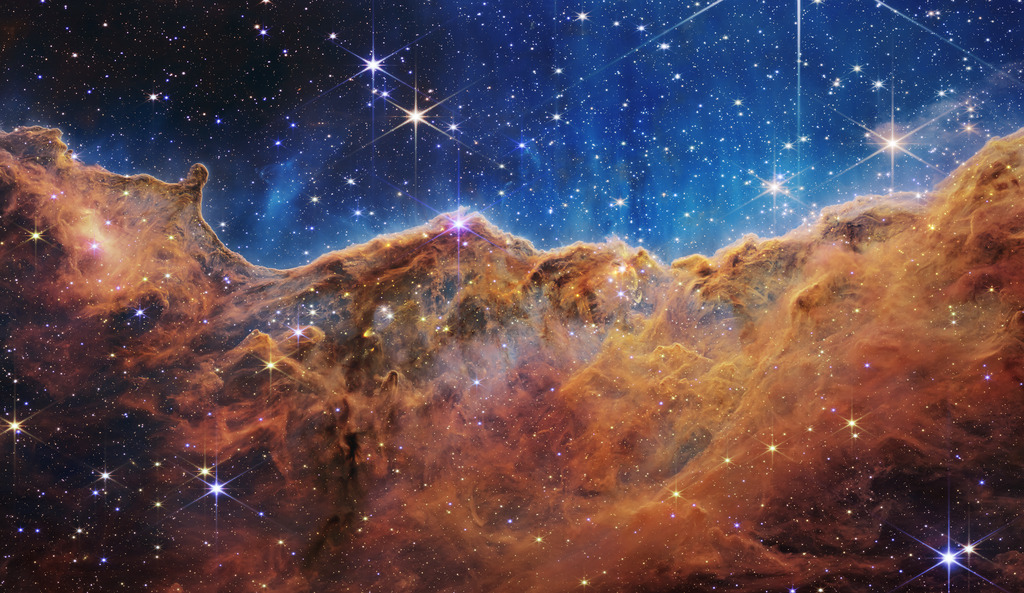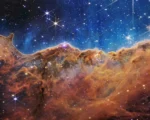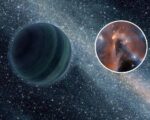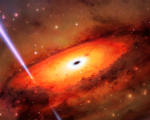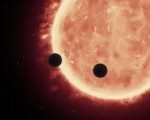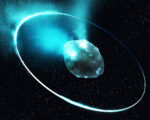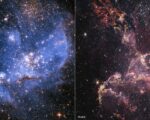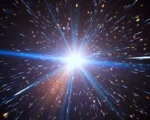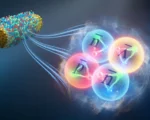James Webb and Chandra Telescopes Capture Breathtaking Images of Distant Star Clusters
A stunning new image has emerged from the far reaches of the Small Magellanic Cloud, a galaxy located around 200,000 light-years away from Earth. This captivating image showcases the star cluster NGC 602, captured through the combined efforts of the James Webb Space Telescope (JWST) and NASA’s Chandra X-ray Observatory. The cluster, situated in an environment resembling the early universe, is marked by low levels of heavy elements. The surrounding region is teeming with dense dust clouds and ionized gas, offering a glimpse into active star formation processes that unfold under conditions vastly different from those in our own solar neighborhood.
A Wreath of Stars and Dust
The Webb Telescope’s near-infrared and mid-infrared imaging data unveil a striking wreath-like structure encircling the star cluster. This ring of dense dust clouds appears in an array of vivid colors—green, blue, orange, and yellow—while Chandra’s X-ray data paints the image with vibrant red tones, signifying high-energy radiation from young, massive stars. These stars, with their powerful winds, illuminate the surrounding gas and dust, offering a breathtaking view of stellar creation. The combined glow from lower-mass stars extends across the region, creating an image that bears a festive resemblance to a holiday wreath.
Insights Into Stellar Formation
The environment around NGC 602 provides valuable insights into the conditions under which stars are born in the early universe. The low concentration of heavy elements and the ongoing star formation within this region highlight the differences between the star formation processes observed in distant galaxies and those in our own. This discovery adds another layer to our understanding of how stars and galaxies evolve in the vast expanse of space. The remarkable detail captured by both Webb and Chandra offers a unique window into a distant past, shedding light on cosmic events that shaped the universe as we know it.
The Christmas Tree Cluster in Stunning Detail
In addition to NGC 602, another remarkable image has been produced featuring the star cluster NGC 2264, also known as the “Christmas Tree Cluster.” Situated about 2,500 light-years away, this cluster consists of young stars, aged between one and five million years. A composite image, blending Chandra’s X-ray data with optical observations captured by astrophotographer Michael Clow in November 2024, reveals a cone-shaped structure dotted with starlight, resembling a cosmic Christmas tree. The combined data from both the X-ray and optical wavelengths provide a new level of precision, offering an in-depth view of the cluster and its surrounding nebula. These images underscore the power of modern telescopes in unveiling the wonders of the cosmos.


